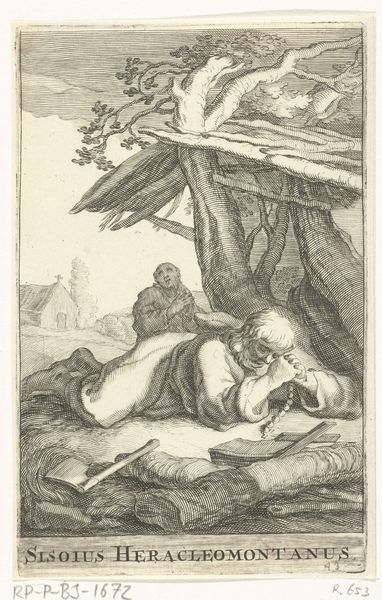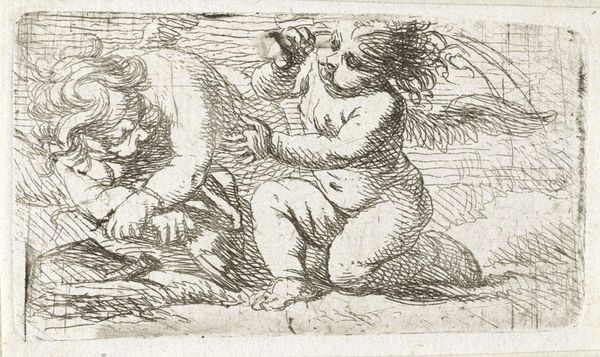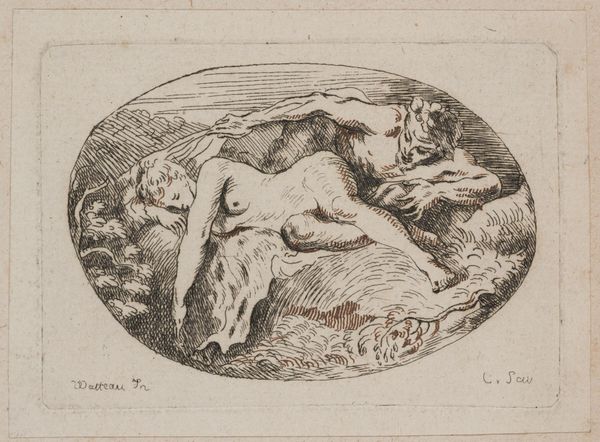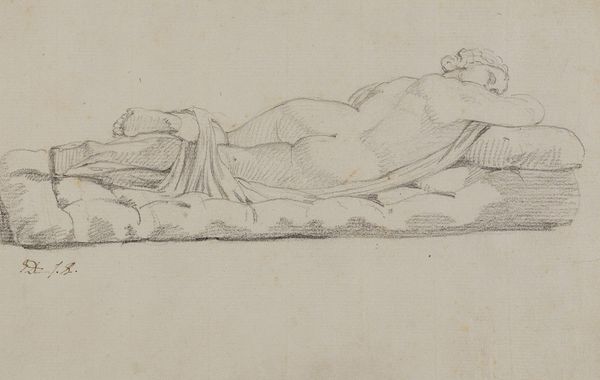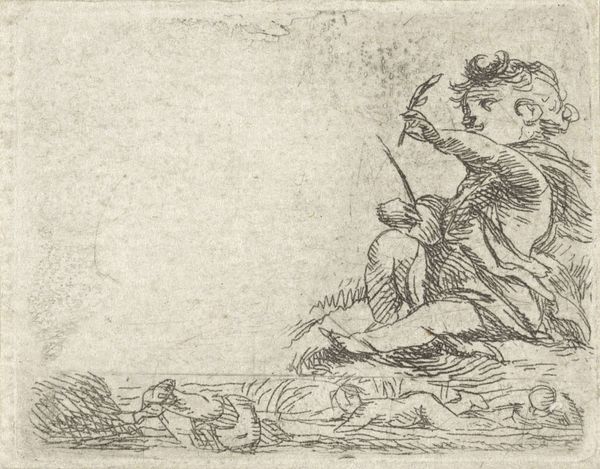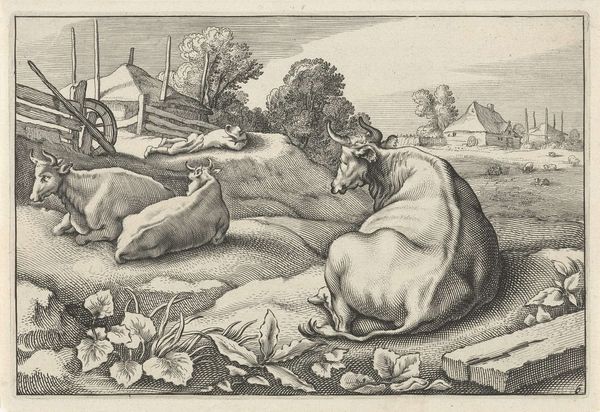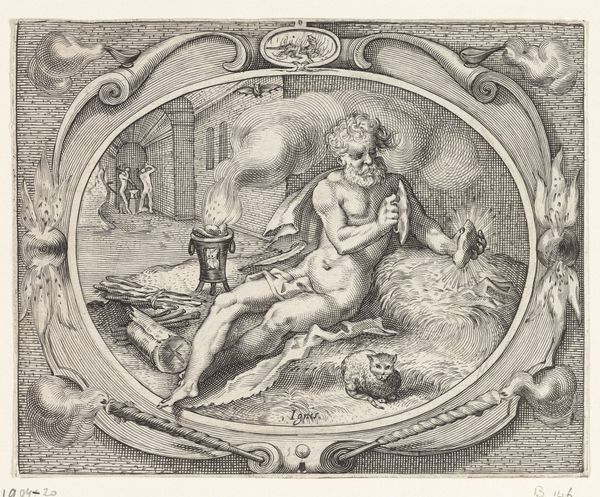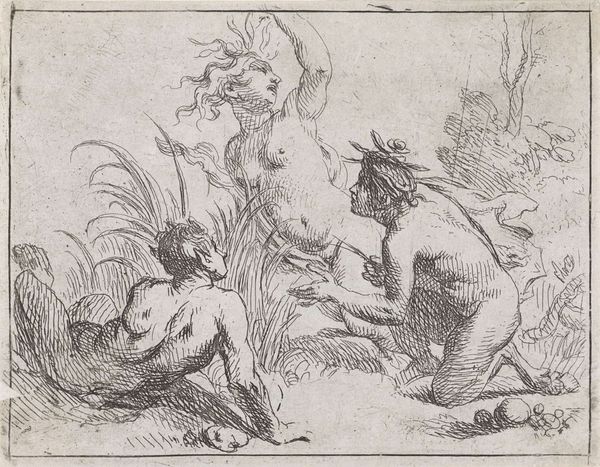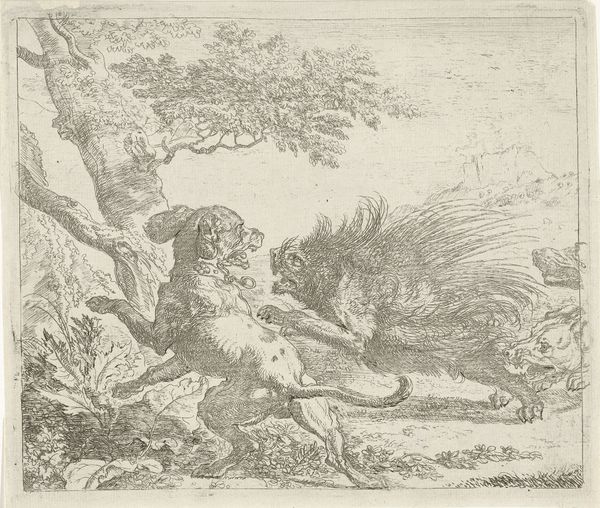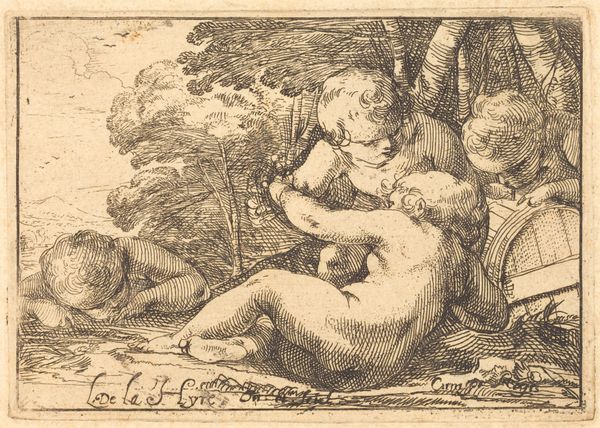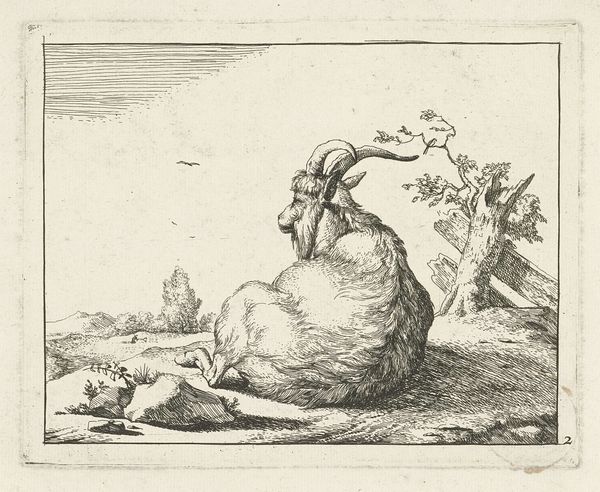
drawing, ink
#
drawing
#
baroque
#
pen sketch
#
landscape
#
figuration
#
ink
#
miniature
Dimensions: height 132 mm, width 195 mm
Copyright: Rijks Museum: Open Domain
Editor: Here we have Lorenzo Loli's "Amor Slapend in een Landschap," made with ink on paper sometime between 1622 and 1691. It's a very delicate drawing. It feels peaceful, even vulnerable. I wonder, what deeper currents are flowing beneath this seemingly simple scene? Curator: Ah, yes. The sleeping Cupid. More than just a cherubic nap, isn't it? Consider what Cupid, or Amor, traditionally represents: desire, attraction, even irrationality. But here, he's dormant. What does it signify when that potent force is subdued? Could it be a commentary on the fleeting nature of love, or perhaps a longing for a respite from its overwhelming power? Notice how the landscape is merely suggested, not fully realized. The landscape, so central in the tradition of the era, provides almost no support for the sleeping figure. Editor: That's fascinating! I hadn't thought about it as the absence of something. So, it is not simply a portrait, but a symbolic scene...but is that not limiting this work by suggesting Cupid is “only” love and desire? Curator: I understand your point about reduction. Yet these established symbols gain meaning from their constant invocation throughout the centuries. Is that not also true about ourselves, our lives, as individuals—defined and enhanced precisely by the many common, human elements? Does that in any way cheapen our existence? Think about it...the symbolism amplifies the emotional and psychological impact of the artwork, embedding it in a cultural narrative that resonates across generations. Editor: Okay, I see what you mean. Thanks, that gives me a whole new perspective on how to look at older artworks. It's not just about what's there, but also about the shared language of images across time. Curator: Precisely. The past speaking to us.
Comments
No comments
Be the first to comment and join the conversation on the ultimate creative platform.
